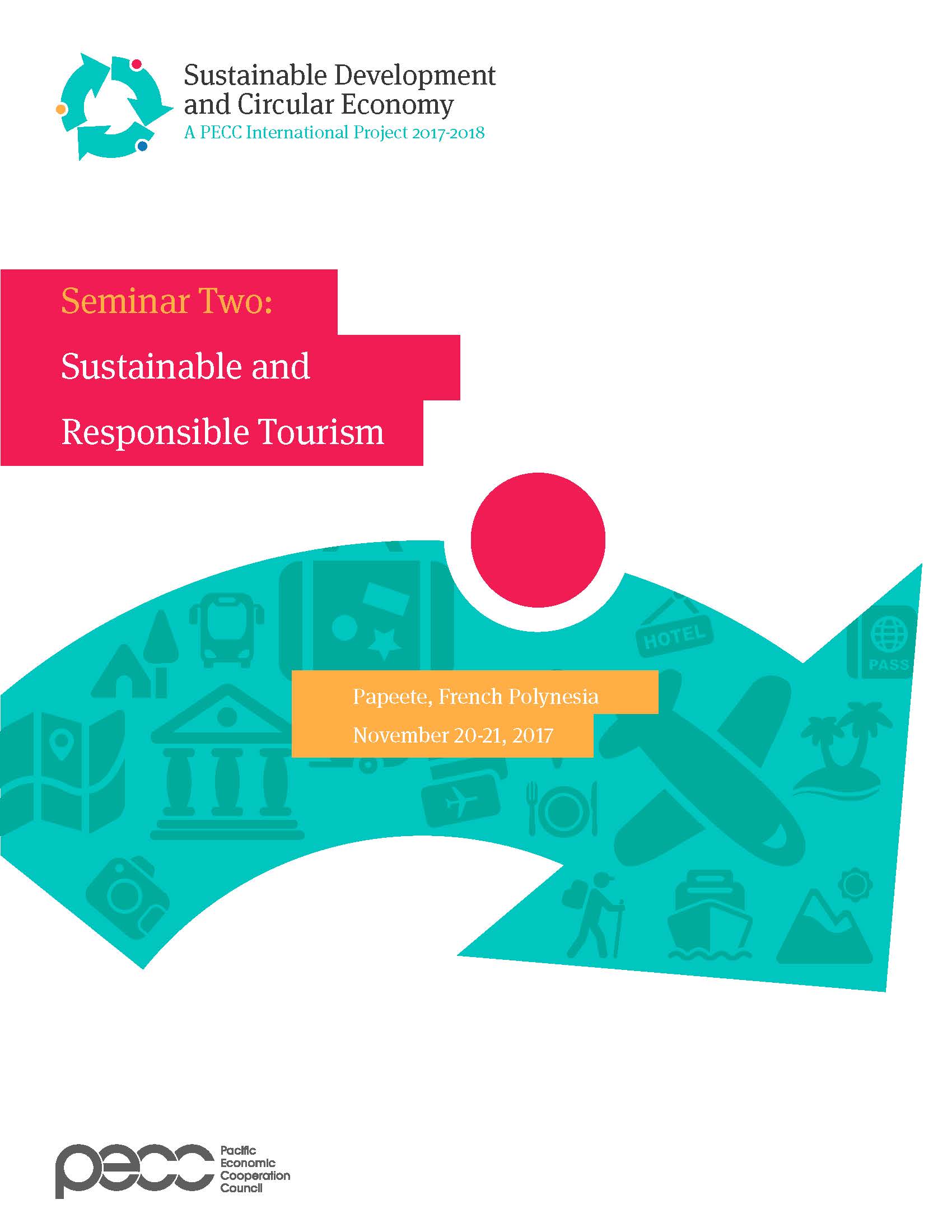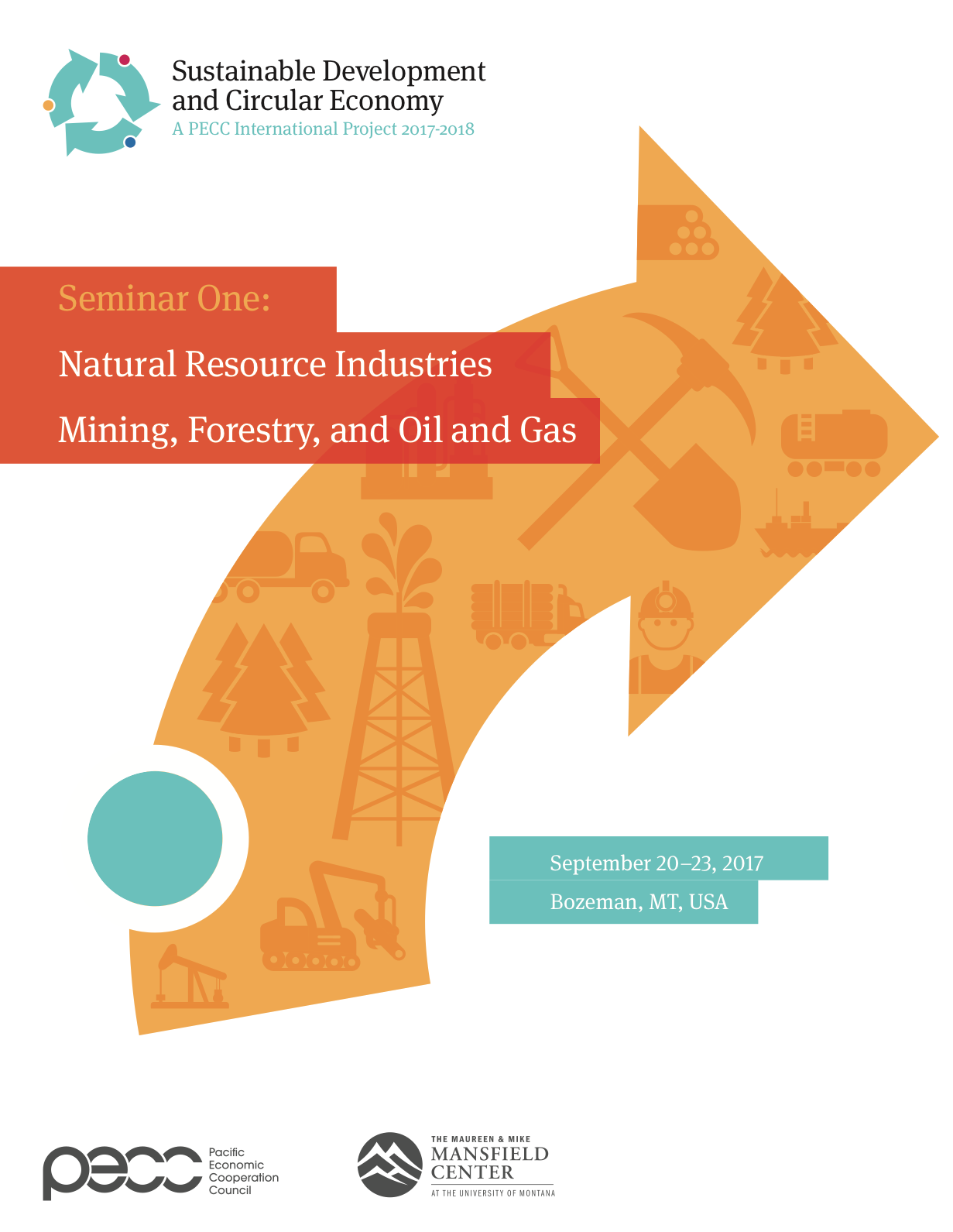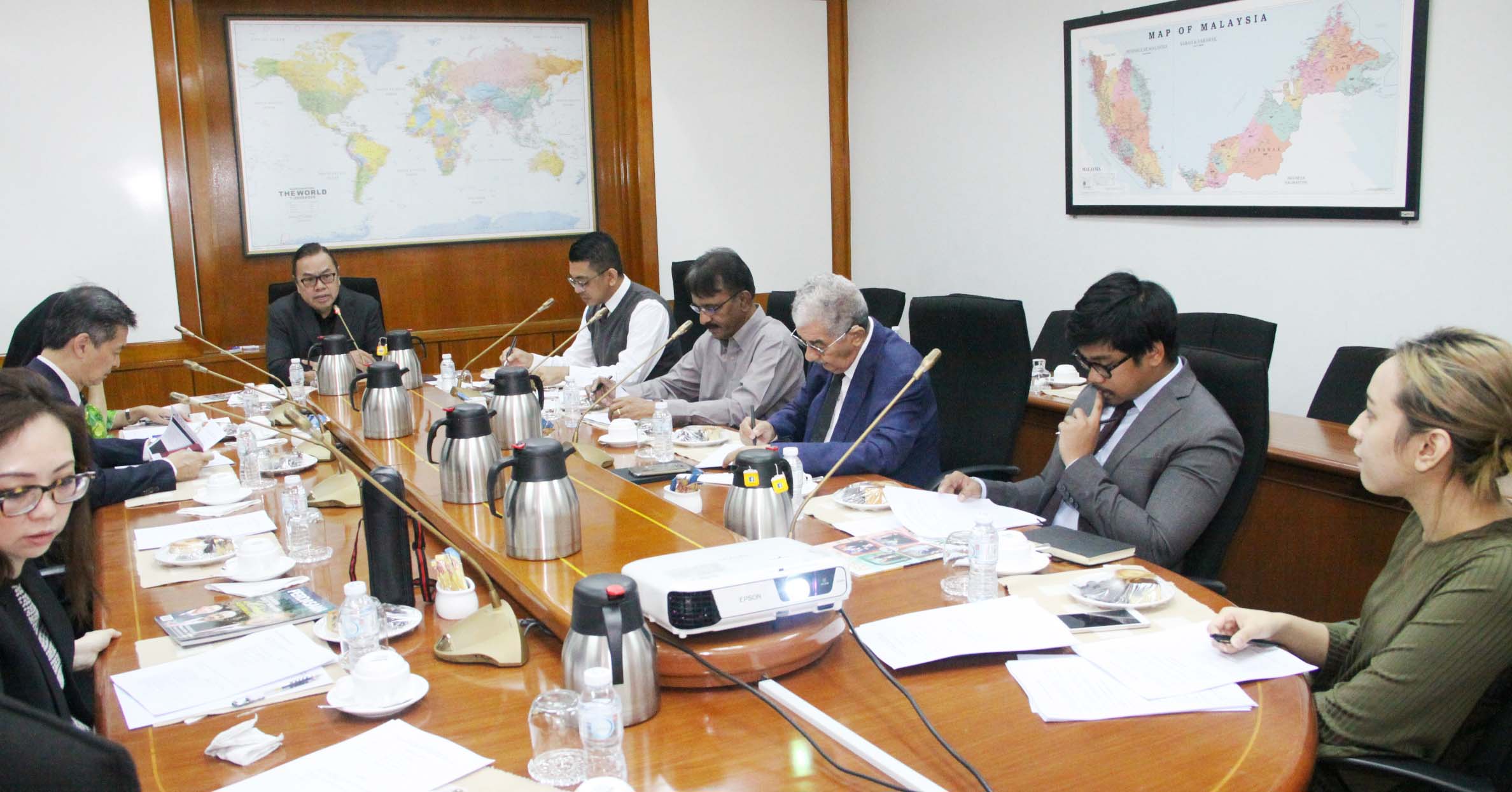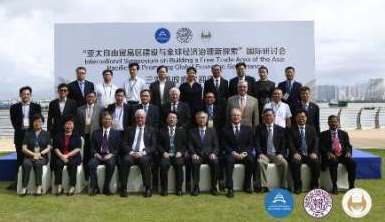|
 The United Nations has named 2017 the “International Year of Sustainable Tourism for Development.” More than one billion international tourists are traveling around the world each year and this number is expected to increase significantly by 2020, driven largely by China’s growing middle class as well as the cruise industry. The tourism sector for many economies is growing at exponential rates and represents substantial economic value for a many of Asia-Pacific economies. The United Nations has named 2017 the “International Year of Sustainable Tourism for Development.” More than one billion international tourists are traveling around the world each year and this number is expected to increase significantly by 2020, driven largely by China’s growing middle class as well as the cruise industry. The tourism sector for many economies is growing at exponential rates and represents substantial economic value for a many of Asia-Pacific economies.
The tourism industry has become a major source of revenue for many of the region’s economies but also has become an increasing concern regarding environmental protection. Given the growing number of visitors and the infrastructure expansion necessary to support these tourists, many of the attractive and valuable environmental/ cultural features are at risk. Over time, without proper planning and education, these tangible and intangible assets may become degraded, losing their original form, causing the tourism industry to suffer and eventually become unsustainable. Short-term gains may be realized at the expense of long-term revenue opportunities.
Sustainable tourism can help boost employment and economic growth for local communities and indigenous peoples by engaging them in various tourism activities, and in some cases, alleviate poverty. Moreover, sustainable tourism that integrates the concept of the circular economy promotes the conservation of natural resources and reduction of tourism-related carbon footprint. This can also be expanded and integrated into other sustainability programs associated with micro-industries, micro-financing, and sustainability practices for other industries that are interdependent with tourism. Sustainable tourism also promotes education and first-hand understanding for and preservation of local cultural heritage and diversity.
The seminar on sustainable and responsible tourism addressed how a vital economic activity, especially for developing economies, can grow sustainably without contributing to the environmental and cultural degradation. Participants discussed integration of circular economic factors into tourism which can contribute to increasing the economic, social, and environmental benefits.
The second seminar of the three-part series was hosted by the local government of French Polynesia.
Program Agenda
 The State of the Region 2017-2018 report of PECC was released today on the sidelines of APEC senior official and ministerial meetings ahead of the summit. The Report is an annual statement of PECC’s views on the major developments affecting Asia-Pacific regional cooperation. It contains a macroeconomic overview of the current state of the Asia-Pacific region. as well as the results of PECC's annual survey of the region's opinion leaders. The State of the Region 2017-2018 report of PECC was released today on the sidelines of APEC senior official and ministerial meetings ahead of the summit. The Report is an annual statement of PECC’s views on the major developments affecting Asia-Pacific regional cooperation. It contains a macroeconomic overview of the current state of the Asia-Pacific region. as well as the results of PECC's annual survey of the region's opinion leaders.
This year, the survey was conducted from 10 August to 14 September and responses were received from 722 opinion leaders. The survey panelists were selected based on their expertise and direct involvement or influence on regional policy-making, coming from government, business and civil society.
According to the PECC survey, the top 5 priorities that the APEC Leaders’ should address in Da Nang are:
- Promoting sustainable, innovative and inclusive growth through the APEC Growth Strategy
- The emergence of anti-globalization & anti-trade sentiments
- Progress towards the Bogor Goals and the Free Trade Area of the Asia-Pacific (FTAAP)
- Improving economic financial and social inclusion in the region
- Climate change cooperation
The Report also featured a thematic chapter on the challenges and opportunities offered by the digital economy. As mentioned in Chapter 2 of the Report, “the digital economy, if successful, can promote efficiency, innovation, and inclusion.”
The impact of the digital economy on labor markets will be significant and appropriate adjustments will be needed. Routine jobs will be replaced by machines and systems, through the process of automation. According to the respondents of the PECC annual survey, some types of jobs are expected to decrease, such as clerical and assembly line work, while others such as technical and professional jobs are expected to increase. “There will inevitably be some shifts in the future labor market as certain jobs become redundant while new skills are required. Various digital tools and online platforms can help us become more inclusive in our approach to education and upskilling; this can be our chance to bring more people to benefit from easier access to knowledge and to better, higher paying jobs,” said PECC Co-chair Ambassador Tang Guoqiang.
Increasing protectionism was seen as the top risk to growth of the Asia-Pacific region according to the PECC annual survey. Lack of political leadership and slowdown in the Chinese economy were second and third risks to growth.
“Against the backdrop of concerns over rising protectionism, arguments for regional economic integration efforts and emphasis on pathways to achieving the Free Trade Area of the Asia-Pacific (FTAAP) and support for the multilateral trading system become even more pertinent. They provide stability, certainty, and a sense of forward momentum,” said PECC Co-chair Don Campbell.
Download the full report.
Related press releases
 Many PECC economies depend upon revenue from natural resource utilization. This includes a wide range of primary and secondary industries involving forestry, mining, and oil and gas development. Natural resource extraction and the value of these commodities can represent significant percentages of GDPs. However, growing concern over climate change, biodiversity, and human health impacts has resulted in an increasingly complex set of domestic and international government regulations, interventions, and analyses concerned with enforcing sustainable environmental policy. Many PECC economies depend upon revenue from natural resource utilization. This includes a wide range of primary and secondary industries involving forestry, mining, and oil and gas development. Natural resource extraction and the value of these commodities can represent significant percentages of GDPs. However, growing concern over climate change, biodiversity, and human health impacts has resulted in an increasingly complex set of domestic and international government regulations, interventions, and analyses concerned with enforcing sustainable environmental policy.
In response to this web of rules, regulations, laws and emerging international treaties, many companies have begun investing in a range of innovative approaches to achieving sustainability objectives while growing their respective financial bottom-lines. As necessity is often the mother of invention, international leaders in forestry, mining and oil and gas industries are utilizing technological innovation, advances in data science, and practical solutions to achieve competitive positioning. These investments have at least three main features: 1) a realization it is often in the best interest of the industry to be proactive in relationship to sustainability goals; 2) developing a long-term strategic goal of optimizing profit with sustainability metrics can be financially beneficial across the entire value chain; and 3) an increasing realization by primary resource industries that the global consumer voice and buying power is playing an increasing role in commodity value-add utilization and consumption; ignoring potential brand devaluation by global, multinational consumer activism carries increasing risk.
The first seminar of 'Sustainable Development & Circular Economy' project brought together government, research, business and technology leaders who are pioneering innovative solutions to achieve economic performance within regional, national, and international sustainability policy frameworks. The group shared their ideologies, best practices, and experiences on achieving economic objectives within the context of an increasingly challenging global regulatory framework. Specifically, the participants addressed circular economic capacity in the context of their respective industries and the reality of achieving sustainability goals.
The group also explored these topics against active international conversations, negotiations, and endorsements of the 2016 Paris Agreement on Climate Change. This important milestone set into motion a range of sustainability goals and objectives that impact global economic – ecological systems and the inhabitants of these interconnected systems. Seminar participants were challenged to analyze, discuss and share real-world examples of circular economic features that meet or exceed Paris Agreement goals and process improvements.
This first seminar was organized in Bozeman, Montana (United States) jointly with the Maureen and Mike Mansfield Center, University of Montana on September 20-23, 2017.
Program agenda
MEMBER COMMITTEE UPDATES
 The second Malaysia National Committee for Pacific Economic Cooperation (MANCPEC) meeting on APEC Beyond 2020 was held on Friday, 15 September 2017, at Boardroom, Institute of Strategic and International Studies (ISIS) Malaysia, Kuala Lumpur. The meeting was attended by 10 MANCPEC members and chaired by Dato’ Steven CM Wong, Deputy Chief Executive, ISIS Malaysia. The second Malaysia National Committee for Pacific Economic Cooperation (MANCPEC) meeting on APEC Beyond 2020 was held on Friday, 15 September 2017, at Boardroom, Institute of Strategic and International Studies (ISIS) Malaysia, Kuala Lumpur. The meeting was attended by 10 MANCPEC members and chaired by Dato’ Steven CM Wong, Deputy Chief Executive, ISIS Malaysia.
The main purpose of the meeting was to deliberate the ongoing PECC Signature Project on APEC Beyond 2020 agenda. The meeting also briefed MANCPEC members on the latest updates regarding the APEC Beyond 2020 questionnaire. To this end, MANCPEC members kindly agreed to disseminate the questionnaire to their respective and relevant contacts. The meeting also discussed the need for better communication among MANCPEC members to ease coordination of MANCPEC and PECC initiatives.
Download program agenda
 Sponsored by China National Committee for Pacific Economic Cooperation (CNCPEC), the APEC Study Center of Nankai University, Hainan CGE Peace Development Foundation and supported by the Center for China and Globalization, an international symposium, 'Building A Free Trade Area of Asia-Pacific and Promoting Global Economic Governance' was held in Sanya, Hainan, China on 15th August 2017. Sponsored by China National Committee for Pacific Economic Cooperation (CNCPEC), the APEC Study Center of Nankai University, Hainan CGE Peace Development Foundation and supported by the Center for China and Globalization, an international symposium, 'Building A Free Trade Area of Asia-Pacific and Promoting Global Economic Governance' was held in Sanya, Hainan, China on 15th August 2017.
Mr. Gonzalo Gutierrez, Peruvian former foreign minister and current Ambassador to the European Union; Mr. Rory McLeod, Chair of APEC Economic Committee; Ambassador Tang Guoqiang, Co-chair of the Pacific Economic Cooperation Council (PECC), and Mr. Dai Yuming, Vice Mayor of Sanya City, delivered the welcome and keynote speeches.
More than 40 leading experts on APEC issues from top Chinese and foreign think tanks gathered at the Symposium to discuss and search means to turn the APEC economic leaders' vision and initiative of building a Free Trade Area of the Asia-Pacific (FTAAP) into viable action plans. The Symposium examined the potential well-being that FTAAP can create for the Asia-Pacific region, the challenges in building it, and the trade-off of interests between various stakeholders. The participants also held extensive discussions on strengthening the momentum of Asia-Pacific economic integration, exploring new concept and new model that the Asia-Pacific can contribute to the global economic governance.
The participants agreed that the Asia-Pacific is facing an increasingly complex economic situation, with the growth of the emerging economies slowing down and major developed economies struggling with structural problems internally. And thus the regional economic integration and cooperation is destined to be a long, zigzag process. "Based on the discussions, we have to find a balanced, inclusive and win-win method to meet the challenges and promote FTAAP in a steady way," said Amb. Tang Guoqiang.
The experts also agreed that realizing the Bogor Goals by 2020 -- complete trade and investment liberalization in the Asia-Pacific --- remains the core task of APEC. As a milestone of the APEC history, the Bogor Goals, established in 1994 at an APEC summit in Bogor, Indonesia, have contributed to the sustainable development and equitable growth of the member economies. They said that now that APEC has tasked itself with formulating a post 2020 new vision, the momentum of Bogor Goals should be carried on and its objectives further enhanced, and as such the various efforts to promote the realization of FTAAP should serve as the core driving force of Asia-Pacific economic integration in the Post-2020 era.
As Amb. Gonzalo Gutierrez and many other experts argued at the Symposium, if in the next three years there is no boost in the real trade negotiating process in the Asia-Pacific, we will reach a plateau in the intra and extra-regional exchange of goods and services, which will further impair the prospects to generate employment and development. Therefore our region needs the political will to start the negotiation of FTAAP as soon as possible, preferably as the RCEP process concludes or around 2020, as the Bogor Goals expire. For that purpose, we must reach a consensus on what to negotiate, how to do it, and when to start the process.
PUBLICATIONS

Executive Summary
The Asia-Pacific economy is expected to grow by 3.6 percent in 2017 and 2018. This is a significant improvement from last year when growth was at around 3.2 percent. Much of this improvement comes from faster than expected growth in the region’s largest economies: the United States, China and Japan.
However, underlying the upbeat forecast, there remain important structural concerns about the nature of growth in the region: high levels of debt; the impact of rising interest rates on the ability of the individuals and the corporate sector to service that debt; slowing trade and its ability to act as a driver of growth; and the impact of the digital economy.
According to PECC’s annual survey, the top-5 risks to growth were:
- Increased protectionism
- Lack of political leadership
- A slowdown in the Chinese economy
- Possible slowdown in world trade growth
- Failure to implement structural reforms.
Over 44 percent of respondents selected increased protectionism as a top 5-risk to growth for their economy. This finding should not be entirely surprising, according to Global Trade Alert, since 2008, Asia-Pacific economies have adopted a total of over 71,000 trade restricting policy measures.
On the side of forward momentum on trade opening, there is uncertainty over the future of regional trade initiatives. According to economic modeling studies, the implementation of the TPP-11 could boost the GDP of the 11 economies by 3.0 per cent. Estimates suggest that if the RCEP economies eliminate all import tariffs that existed as of 2011, the average real GDP of the RCEP economies would be boosted by 1.9 percent. [More...]
Download the entire publication (66 pages, 1.76 MB)
|






